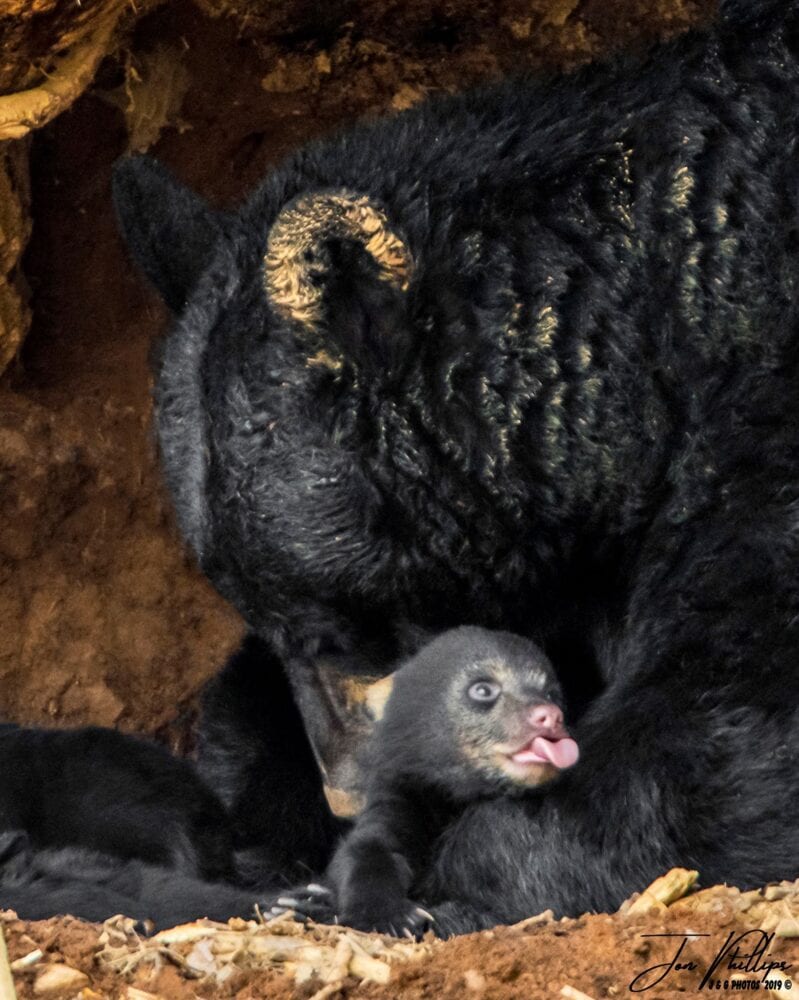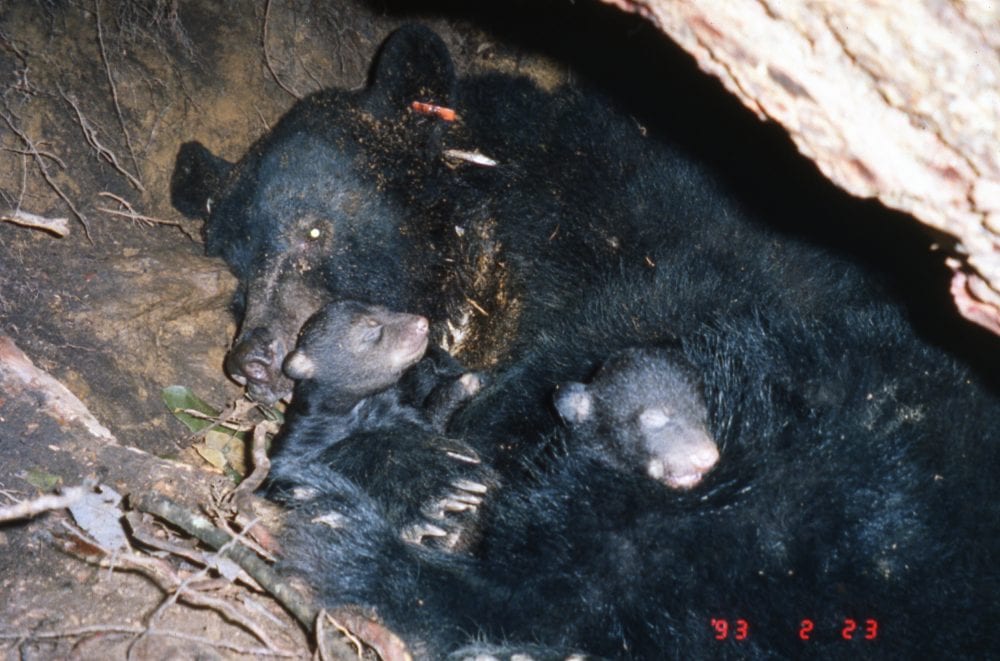
By Daryl Ratajczak, Wildlife Biologist and Wildlife for You Instructor
The start of spring means that New Mexico’s black bears are starting to come out of their dens after hibernating through the winter! Our state’s bears tend to enter their dens between late October and early December. Generally, they emerge from late March to early May.
Hibernation is a general term used to describe long periods of inactivity sometimes due to extreme cold, but mostly due to lack of food. To put it simply, animals decide to “sleep” through the winter since food resources are scarce or non-existent.
But given the fact that winter — especially in the northern climates — can last months on end, how can an animal survive the entire winter without eating or drinking? That, my friends, is the crux of this amazing adaptation. And bears do it better than any other animal.
Complex Biology Made Simple
Instead of starting off by describing the life processes necessary for an animal to hibernate, let’s start by thinking about your car. Say you were to fill up your gas tank to run a test on fuel efficiency. In other words, what’s the optimum rate an engine needs to operate in order to stay running the longest?
The answer is pretty straightforward: the slower the engine operates, the longer it will take to burn the gas in the tank. For example, a car driving 70 mph down the highway is going to burn through its tank of gas faster than one idling in the driveway, sitting in the parked position.
Voilà!!! You just learned everything you need to know about hibernation!
Much like a car, animals more-or-less have to put their bodies in “Park” so they can survive the winter on their respective tank of gas (fat reserves). Placing their bodies in “park” and idling through the winter, however, is what is truly interesting and amazing.
Hibernating animals need to drastically reduce the amount of energy (gas) they expend. As most of you know, being active and exercising burns up a lot of energy. So the first thing an animal must do when entering hibernation is to stop moving, hence the “sleeping” part.
Here is the issue … all mammals, even when sleeping, must maintain a constant body temperature and must continue to perform basic life functions. Things like breathing and maintaining a heartbeat to keep their blood pumping are just a few of the more important functions, since they keep them alive. It takes a considerable amount of energy, even when sleeping, to maintain these basic bodily functions. This is what makes a hibernator so special.
Hibernators almost completely shut off their bodily functions:
- Their respiration rate drops to next to nothing.
- Their heartbeat is barely detectable at only a beat or two per minute.
- And their body temperature drops to just above freezing.
In more technological terms, their overall metabolism drops 50 percent for roughly every 20°F they lose in body temperature. This means they’re burning half the energy they would if they were only sleeping. When they go into complete “hibernation mode,” their bodies are literally in a frozen coma. Punxsutawney Phil, the groundhog, is perhaps the most notable hibernator of this sort!
In this nearly-frozen state, they barely expend any energy, but they’re also barely alive. In fact, it takes them quite a bit of time — possibly a day or so — to “wake up”. It’s kinda like trying to start a car that hasn’t been started in a long, long time. It may actually take a while to get it going.
Pretty neat, huh?
And then, there are bears:

But wait a minute … aren’t bears hibernators?
Yes and no.
Bears hibernate … but they are not true-hibernators. They are what we call super-hibernators. Or as I like to call them “super sleepers.” Here’s why bears are so extremely special and a phenomenon in the animal world.
When bears hibernate:
- Their breathing slows to only about a breath per minute.
- Their heart may beat only about once every 20 seconds.
But this is where it gets interesting …
Their body temperature only drops a smidgen, from roughly 99°F to 92°F. Yet, with only this slight temperature drop, their metabolism has already decreased by 75 percent. They’re literally just sleeping, but barely expending any energy in the process. Because their body temperature is so high and close to normal, they can literally wake up in just a few minutes.
Pregnant females give birth to cubs in the middle of their hibernation, usually from late January to mid-February. The mothers wake up periodically during the rest of hibernation to tend to the cubs, but the newborn cubs stay tucked in close to mom and simply nurse off her the first few months.
Crazy is the fact that although they are sleeping fairly close to how you and I would, they won’t have a need to eat, drink, or poop for up to six months! I could barely make it through the night without doing one of those three! Black bears usually form a fecal plug (kind of like a cork) that keeps them from defecating throughout their slumber.
If humans tried going that long without removing waste, we would die of toxicity from our kidneys not adequately filtering the waste products in our bloodstream.
And craziest of all … bears barely lose any muscle mass, they primarily burn only fat. Bedridden humans, on the other hand, usually lose muscle and bone mass first if they stay in bed too long. Black bears can lose up to 30 percent of their body weight during hibernation!
Now you can see why bears are completely amazing creatures!

Wow, so interesting what bears are capable of. I think I read on your page too that a female can hold off fertilizing her eggs until they are in hibernation. You have a a wonderful job. Thanks for helping bears
and helping us understand these beautiful animals.